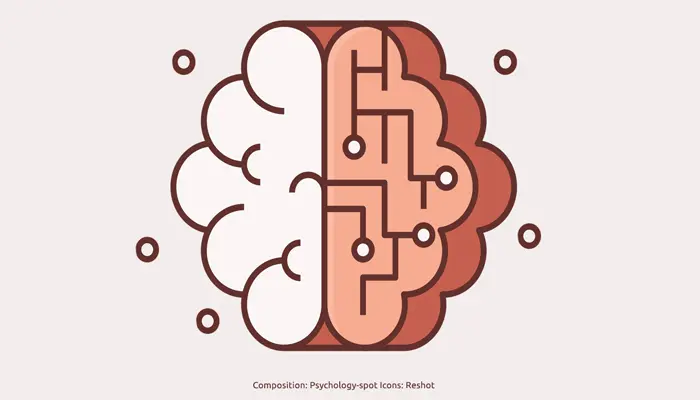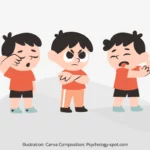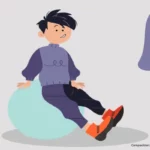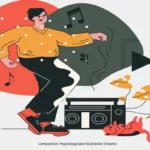
Addiction is one of the most devastating mental health problems. It can not only negatively affect the person’s professional career but also their relationships and family life, as well as physical health and well-being.
When use continues over time, dependence on the substance develops. As the adverse effects of addiction accumulate, the person may become more emotionally unstable, which could lead to a mental disorder. In fact, disorders like anxiety and depression have been linked to substance abuse, so they often go hand in hand.
The good news is that addiction is treatable. A study conducted at the United States Centers for Disease Control and Prevention revealed that 3 out of 4 people who suffer from addiction end up recovering. However, in many cases they need to undergo psychological treatment in a rehab clinic to counteract the effects of addiction on their brain and regain control of their lives.
The brain mechanism that causes addiction: The dependency trap
Addiction develops when the brain’s pleasure circuits become saturated, to the point that consumption becomes chronic. The reward system is one of the most primitive parts of the brain whose main function is to reinforce the behaviors we need to survive through of the sensations of desire, pleasure and/or gratification.
When we practice these behaviors, reward pathways send a signal stimulating the production of a neurotransmitter called dopamine, which in turn releases a rush of satisfaction. These positive feelings are what encourage us to repeat these behaviors in the future.
However, addictive substances, such as alcohol and drugs, trigger a pleasure response in the brain that can be up to 10 times more intense than a natural reward, according to the Yale School of Medicine. They do not generate a simple wave of satisfaction and well-being, but rather flood the reward system with dopamine, causing a real “high”, as can be seen in the image below.

The difference between the normal rewards we receive in our daily lives and the effect of some drugs on the brain, is like listening to someone whispering in our ear compared to a person yelling at us through a megaphone.
Little by little, the brain begins to change as a result of these stimuli and occurs what is known as “pathological usurpation” of natural processes focused on learning beneficial behaviors. An excess of dopamine causes changes in neuronal synapses that push the person to repeat a certain behavior over and over again, without reflecting on its convenience, which facilitates the formation of bad habits.
Due to the intense euphoria that many drugs cause, they also stimulate the production of a large amount of dopamine, which further reinforces the connection between substance use, pleasure, and the circumstances linked to this experience. In practice, these tsunamis of dopamine “train” the brain to seek out alcohol or drugs, which little by little becomes the only way to feel better.
The vicious circle that generates addictions in the brain
Over time, reward circuits adapt to addictive substances and become less sensitive to dopamine, so that to experience the same pleasurable sensation it is necessary to consume more and more frequently.
At that point, it is likely that the person has developed both a high tolerance and a heavy dependence on alcohol or drugs. In fact, addiction not only causes changes in neuronal connections, it also affects intracellular mechanisms, acting at a biochemical and molecular level.
At the same time, the effect of addictions on the brain decreases its sensitivity to any stimulus other than the addictive substance, hindering the ability to feel pleasure through other, healthier experiences or activities.
In practice, the brain in the grip of addiction values alcohol or drugs above any other reward or goal, which is why that person’s life begins to gravitate towards the constant search for the addictive substance. Returning to the example above, the person finds it increasingly difficult to hear someone whispering in their ear because they have become accustomed to hearing screams through megaphones.
The person who develops an addiction ends up experiencing anhedonia; That is, he/she feels flat from an emotional point of view and without motivation. He/she is unable to enjoy things that were previously pleasant and needs to continue consuming to experience a minimum level of satisfaction.
Added to this are the changes that occur in the amygdala, a structure of the limbic system that triggers states such as anxiety, irritability and restlessness, since it is responsible for decoding and providing emotional valence to situations.
As the amygdala becomes increasingly sensitive to increased consumption, over time the person also needs to turn to the addictive substance to obtain temporary relief from the discomfort caused by abstinence. At a certain point, it is not only consumed to experience the dopamine “high” but also to avoid the discomfort generated by the brain in abstinence.
On the other hand, addictions end up producing alterations in the prefrontal cortex, the area that is involved in thinking, planning, problem solving, decision making and impulse control.
As a result, the person has difficulties weighing the cost/benefit ratio, as well as the risks and consequences linked to consumption. Therefore, he/she will give in more easily to the impulse to consume and it will be more difficult for him/her to reflect lucidly on the consequences of his/her behavior. Thus he/she enters a vicious circle from which it is very difficult to get out without help.
There is a way out: Why is it important to trust a rehabilitation clinic?
“Quitting drugs is not that simple. It is a difficult process because abstinence causes both physical and psychological symptoms […] In addition, the physical symptoms of abstinence can be very intense and, with some drugs, even dangerous,” as explained by Connection SGGZ, specialists in the treatment of addictions.
For this reason, they recommend going to rehabilitation centers where you can put yourself in the hands of a professional, especially if you have been suffering from an addiction for a long time, consuming excessive amounts of alcohol or drugs, as you may need to detoxify first. When the body and brain have become accustomed to alcohol or drugs, you suffer abstinence symptoms that can be very intense, so it is advisable to undergo the detoxification process under medical supervision.
On the other hand, psychological help is also essential to break the vicious cycle of addiction in the brain. Psychological therapy not only looks for the causes that led to consumption, but it will also provide you with the strategies you need to control the impulse to consume and find pleasure and satisfaction in other, healthier activities.
In fact, psychotherapy is essential to avoid relapses. When your brain has established links between consumption and certain situations in your routine or environment, these stimuli can activate the reward circuit and generate a strong desire to consume. This “reflex” can be maintained for a long time and is often the main cause of relapses. Psychological therapy will help you precisely identify these risk situations so that you learn to manage them more assertively.
A mental health professional will also help you find the motivation to develop other interests and make plans for the future. Psychological therapy will not only help you free yourself from the yoke of addiction, but it will allow you to develop a more positive attitude, help you gain self-esteem, improve your self-efficacy and strengthen self-confidence so that you can enjoy life again. The path may be difficult, but the results are worth it.
References:
(2022) How an Addicted Brain Works. In: Yale Medicine.
Gardner, E. L. (2011) Introduction: Addiction and Brain Reward and Anti-Reward Pathways. Adv Psychosom Med; 30: 22–60.
Gould, T. J. (2010) Addiction and Cognition. Addict Sci Clin Pract; 5(2): 4–14.
Carter, A. et. Al. (2009) Neurobiological Research on Addiction. In: A Review of the Scientific, Public Health and Social Policy Implications for Australia Ministerial Council on Drug Strategy.
Jones, C. M. et. Al. (2020) Prevalence and correlates of ever having a substance use problem and substance use recovery status among adults in the United States, 2018. Drug and Alcohol Dependence; 214: 108169.



